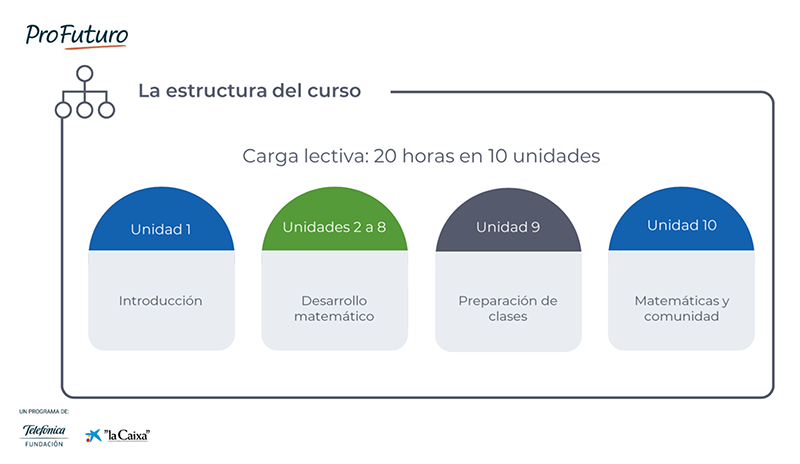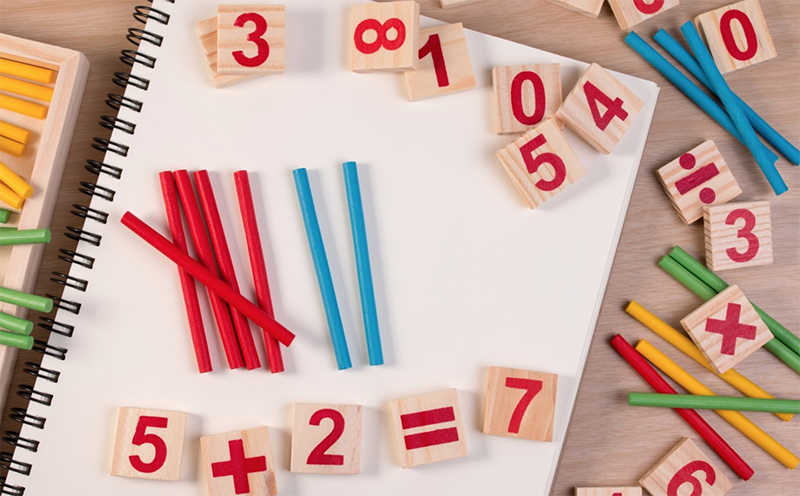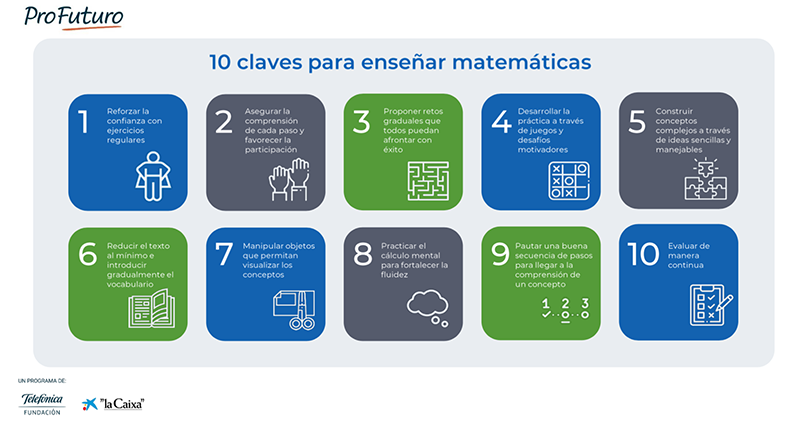How many of us have written off mathematics because we didn’t see it when, perhaps, we were not being taught in the best way?
A Jump Math class is nothing like a normal Maths class. In a Jump Math class, students are motivated and eager to be the one chosen to solve a problem. The idea of this methodology is that children enjoy mathematics. And from what we have been told, it more than succeeds.
ProFuturo discovered the potential of this methodology, which was proving so successful with children, and decided to use it to develop a teacher training proposal to better teach this subject a teacher training proposal to better teach this subject. Why? “Mathematics education is a huge challenge all over the world,” explains Aroa Sánchez, head of teacher training resource development at ProFuturo. And the data proves her right. In the last PISA report, the results of Spanish and Latin American students in maths left much to be desired. In Spain, the average score was 483 points, below the OECD average. Among the Latin American countries, Chile tops the list with 438 points. The Dominican Republic was in last place with 334 points. In addition, continues the head of ProFuturo, “we have another important challenge for students: that Mathematics should be a lever for change and that everyone should be able to discover their potential, regardless of their place of birth or their socio-economic background”.
In this work that Aroa mentions, teachers play the most important role. And so reaffirms Carmen Salcedo, responsible for Jump Math for Spain and Latin America: “Teachers must believe in their students’ ability to learn mathematics. And, every day, before walking through the door, to say to ourselves ‘my students can do it and I will accompany them on this path of understanding and enjoyment’.
“The dynamics of Jump Math are very much aimed at teacher empowerment”, explains the head of ProFuturo, “and it is also a relevant proposal for the environments in which we operate”, environments in which, many times, teachers are faced with great difficulties that start with their own competences.
Jump Math and ProFuturo got down to work on the proposal. The result is an innovative teacher training course based on the learning and evidence achieved by Jump Math around the world, to help teachers improve the way they teach Mathematics, incorporating key pedagogical elements for teaching this subject. What are the keys and pedagogical foundations of Jump Math used by ProFuturo in its proposal?
Jump Math: Mathematics for all (also for teachers)
Jump Math is a programme that aims to facilitate the learning of mathematics for children regardless of their level of logical-mathematical skills. With this method everyone can learn mathematics. Its key is to get students to lose their fear of the subject. How? Through guided discovery: with participatory dynamics, continuous assessment and feedback and the division of lessons into small units, easily manageable for all students in the class. The children work on the concepts in small steps, gradually discovering the subject, when they have the cognitive maturity required to understand them, eliminating any frustration and gaining self-confidence. With Jump Math, students learn to think in a different way, but teachers also learn to teach Mathematics in a different way.
One of its basic objectives is to help the teacher to learn to teach mathematics and enjoy doing so. It is the secret of guided self-discovery. Because for the child to discover the concepts, the teacher has to know how to pose the questions correctly and in a very guided way.
Strategic keys to teaching mathematics
Jump Math has identified 10 key strategies for teaching mathematics and overcoming barriers to learning through different pedagogical strategies. These are the pedagogical strategies that the ProFuturo course puts at the service of teachers to develop their skills in mathematics education, providing them with the maximum teaching capabilities to improve the understanding and motivation of their students:
- Students feel anxious about tackling a task and have trouble concentrating. Strategy: Build confidence through regular exercises.
- As early as primary school, children begin to believe that some children are “less gifted” in mathematics. Those who feel this way tend to make less effort in class. Strategy: Ensure understanding of each step and encourage participation.
- Students who believe that success depends on innate ability perform less well compared to those who believe that success depends on effort. Strategy: Propose gradual challenges that everyone can meet successfully.
- It takes a lot of practice to master new concepts and acquire skills, but students are not always motivated to practice. Strategy: Develop practice through motivating games and challenges.
- The brain is easily overwhelmed by too much new information. Overly complex problems and lengthy texts can discourage and confuse students. Strategy: Building complex concepts through simple and manageable ideas.
- Long texts overwhelm students with reading weaknesses or non-native speakers, making language a further barrier to success in Mathematics. Strategy: Keep text to a minimum and gradually introduce vocabulary.
- It is important to teach mathematics using manipulative material, but to avoid distraction or confusion through ill-structured methods. Strategy: Manipulate objects to visualise the concepts.
- Students who do not master basic numerical operations with long-term memory often do not have sufficient short-term memory to solve problems. This has implications for the ability to identify patterns and make estimates and predictions. Strategy: Practice mental arithmetic to strengthen fluency.
- Students often memorise rules and procedures without understanding them. This allows them to answer specific questions, but does not promote their understanding of the concepts: mathematics does not always make sense to them. Strategy: Outline a good sequence of steps to arrive at an understanding of a concept.
- To make progress in mathematics, previous concepts and skills must be mastered. Many students do not succeed, although the vast majority are able to do so if gaps in learning are identified. Strategy: Evaluate on an ongoing basis.
ProFuturo’s course

The course, accessible to everyone from anywhere in the world, is structured in 10 teaching units, distributed in 20 hours, which address, among other issues, the importance of Mathematics today, the importance of the teacher, classroom dynamics, the main problems that occur when teaching mathematics, how to prepare classes or how to strengthen and live Mathematics in community.

What will a teacher learn from this course?
- To design and develop their lessons on a more didactic and pedagogical basis: asking their students the right questions at the right time so that they can discover Mathematics little by little, without getting stressed or overwhelmed and generating the self-confidence they need to motivate themselves, have fun with the subject and continue learning.
- To make continuous and formative assessment through practice, thus avoiding gaps in understanding. Constant feedback is of fundamental importance in the learning of mathematics. Making the learner aware in the learning process itself, in this very process of guided discovery, of what they have to do, to see what questions, what difficulties they are encountering, is vital. Because it is in this detailed “surgical evaluation” that we can detect those little black holes in our students’ understanding.
- To select teaching resources appropriate to the contrasted advances in mathematics education. This course also provides guidelines for teachers to design their own resources.
Mathematics teachers’ conception of their role in the classroom and in the lives of their students needs to be turned upside down. Let’s provoke his concern for a new way of teaching the subject and awaken his conscience so that he sees himself as an agent of social change who can forever change the lives of his students and thereby make the world a much better place.
If you want to have a look at this course, included in ProFuturo’s Mathematical School, you can access it here.
REFERENCES:
ProFuturo Foundation. (2020). Mathematics for all: Jump Math! Implementation guide. ProFuturo Foundation. Madrid.







